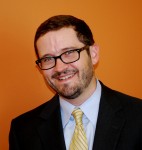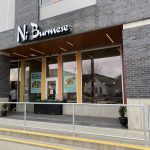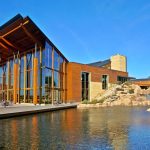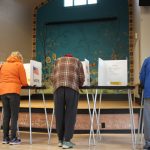The Experimental City
Milwaukee may offer more school choices than any city in America. First of a series by a new columnist.
A great city needs great schools. Few would argue with that. Urban planning trends come and go, but education, along with public safety, is the single biggest quality of life issue for city residents, and the single biggest reason the middle class leaves the city. Rooftop cafes, bike co-ops and farmers’ markets come and go, but without an educated populace, no city can thrive over the long term. That’s why K-12 education is at the top of the agenda for every big city mayor in the U.S.
As a parent myself, of two young boys, there are many things that keep me living in the city: great neighborhoods, parks and cultural opportunities. But without a great school, none of these things would matter. My family has the ability to leave, but we choose to stay, and found a top-notch public school in the center of the city that would outshine most schools anywhere in the state. We are fortunate, but too many of our fellow Milwaukeeans are not.
Few would argue that Milwaukee is doing well in providing a quality education to its citizens. A recent national study found African American students in Milwaukee perform worse academically than their racial peers anywhere else in the U.S. The gap in achievement in Milwaukee between African American and white students is the widest in the nation. These statistics should give pause to anyone concerned about the future, and, indeed, the very character, of our city.
Clearly, we have a crisis. How do we address it? That’s where things get complicated. There have been no shortage of education reform initiatives over the decades. In Milwaukee, much of our reform has centered on the idea of parental choice: allowing parents to choose among a variety of options, trusting they will choose the best quality options for their children.
Milwaukee has broken that mold, perhaps more so than any large city in America. Of the 120,000 kids of school age residing in this city, only about 80,000, or two-thirds, attend a traditional school within Milwaukee Public Schools. The only large cities with a smaller percentage of students attending the traditional district are post-Katrina New Orleans, Detroit, Washington, DC, and Kansas City.
The roughly 40,000 students in Milwaukee who receive a publicly-funded education outside MPS, comprise what is in essence the second-biggest school district in the state. These students attend 142 different schools, divided between 112 publicly-funded private schools, known as “voucher” or “choice” schools, and 30 public “charter” schools. A smaller number attend schools in suburban districts through a long-running program created to achieve integration that sends minority students to suburban districts, and a newer program, known as open enrollment, where a specified number of students of any ethnic backgrounds can attend suburban schools.
While charters and open enrollment are increasingly common throughout the country, voucher schools are largely unique to Milwaukee. Several smaller initiatives exist in other cities and states, but Milwaukee has the only large-scale voucher program in America.
All of which gives a Milwaukee parent access to a galaxy of taxpayer-funded options both within and outside MPS. There are language immersion schools (German, French, Spanish and Mandarin), fully bilingual schools, schools focusing on computer sciences, aviation, business and economics, and environmental sciences, college preparatory schools, religious schools of every type, a charter school catering to the city’s growing Hmong community, and a high school in which students who graduate receive both a high school diploma and vocational certificate from MATC. And the motivated parent can send his or her child to a suburban district while still residing in the city.
If choice itself created quality, our problems would be solved. But while Milwaukee has a wide array of educational choices, we do not have nearly enough quality. Sadly, many parents in our city choose poor quality options, fueling enrollment growth in poor schools. And for parents who choose more wisely, there are not enough quality options in any sector, MPS, choice or charter, to meet the demand.
What makes fixing education so vexing is that we will not know for many years whether today’s approaches will sustain success into the future, so we instead do the best we can to define and measure today’s successes. The most sweeping and influential effort to do this has been the No Child Left Behind act of 2001, which, for better or worse, defined success as a yearly score on a state-issued standardized test. All public schools are subject to these requirements, though many schools, both public and private, go above and beyond the state-issued test to define success on their own terms — through things like graduation rates, college acceptance and completion — and hold themselves accountable for results.
Of course, Milwaukee is not unique in operating in the No Child Left Behind system, and is, sadly, not unique in facing the issues of entrenched, multi-generational poverty that are endemic to urban school districts nationwide. But Milwaukee is quite unique in the different ways it provides a publicly-funded education to students in the city.
In the coming weeks, I will discuss in further detail the different sectors of publicly-funded education in Milwaukee, the kinds of schools each system has given rise to and what the evidence suggests about the level of quality among these different sectors.






















Great article! This is indeed the single biggest issue facing urban success in the US. Great to see you guys tackling it and I hope this article gets a lot of attention!
Could you explain this statement?
“…a newer program, known as open enrollment, where a specified number of students of any ethnic backgrounds can attend suburban schools.”
I am not sure I understand. Were students from different ethnic backgrounds somehow *not* allowed to attend suburban schools, or is it more about geography?
Thanks for the article, Dave. I really look forward to the series!
Hello Jessica, thanks for your question.
Wisconsin has had for some decades now a program in which students residing in the city and are members of an ethnic minority can attend suburban school districts and be bused there at the receiving district’s expense. This program is most commonly referred to as “220” for the State statute that created it.
Open enrollment is newer, less than a decade old, and allows for any student, minority or non-minority, to attend districts outside of where they live. They are not bused there, and there usually is a finite number of open enrollment seats a district will take.
I am curious, what are your qualifications to write about education Mr. Steele. I am not trying to snarky but everyone seems to think they are an expert on education and so when I read an article like yours I am skeptical when I don’t see your affiliation at the bottom.
Thanks
@Chad
Dave has a short biography available on his author page.
http://urbanmilwaukee.com/author/davesteele/
The link doesn’t show anything. Thanks.
@Chad – Here is the content of the bio for Dave, if your link is not working for some reason, it worked fine for me: Dave Steele is Director of School Partnerships for PAVE, a Milwaukee non-profit whose mission is to build excellent education options for families in Milwaukee. An urban planner by training, Dave works with school leaders and their boards of directors to set ambitious goals and to align resources to fulfill them. A bicyclist and advocate for urban living, Dave lives in Sherman Park with his wife and two sons.
Dave,
Good to see you here.
Bruce
This guy seems sincere and appears to know what he’s talking about. Great job getting him, Urban Milwaukee.
if really govt. works on it No Child Left Behind system, and every child will get better education.
Looking forward to the series.
Just remember, we also have very strong high schools like Rufus King (ranked #1 in state) and Reagan. There are some notable exceptions, but yes we must find ways to bring other schools up!
This person is not a teacher, has not been a school board member and it doesn’t sound like he has spent much time in the classroom volunteering. I’m a parent too but that doesn’t make me an expert on education. I’m also guessing that his kids attend a public charter school where an appointed board of wealthy people can make a few phone calls and raise some cash if the school needs it. No thanks. If I want to read about MPS I’ll read blogs by the teachers and board members – people who really know what is going on.